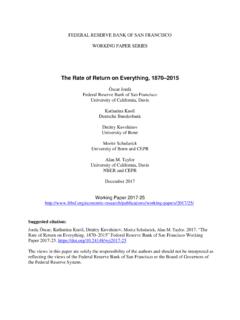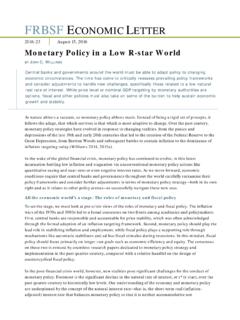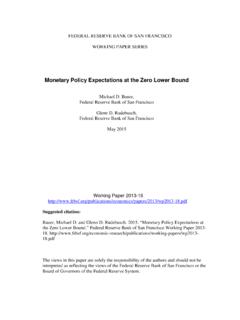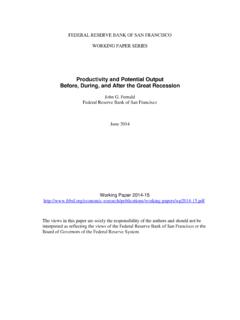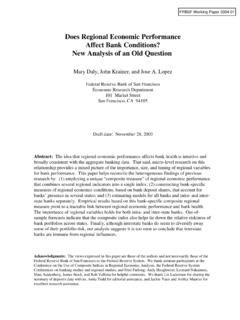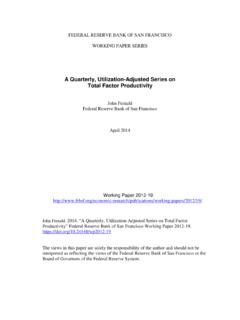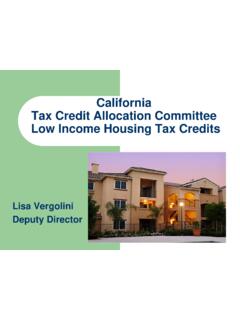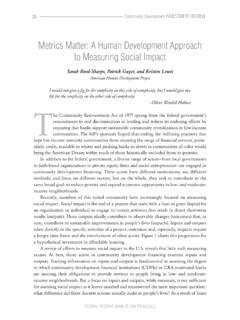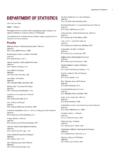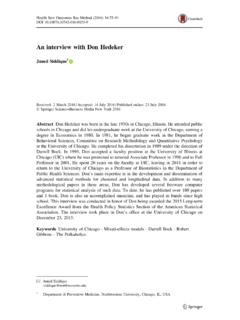Transcription of Mortgage Default and Mortgage Valuation
1 FEDERAL RESERVE BANK OF SAN FRANCISCO WORKING PAPER SERIES Working Paper 2009-20 The views in this paper are solely the responsibility of the authors and should not be interpreted as reflecting the views of the Federal Reserve Bank of San Francisco or the Board of Governors of the Federal Reserve System. Mortgage Default and Mortgage Valuation John Krainer Federal Reserve Bank of San Francisco Stephen F. LeRoy Federal Reserve Bank of San Francisco Munpyung O University of California, Santa Barbara November 2009 Mortgage Default and Mortgage Valuation John KrainerFederal Reserve Bank of San FranciscoStephen F. LeRoyFederal Reserve Bank of San FranciscoMunpyung OUniversity of California, Santa BarbaraNovember 2, 2009 AbstractWe develop an equilibrium Valuation model that incorporates optimal Default to show howmortgage yields and lender recovery rates on defaulted mortgages depend on initial loan-to-value(LTV) ratios.
2 The analysis treats both the frictionless case and the case in which borrowers andlenders incur deadweight costs upon Default . The model is calibrated using data on Californiamortgages. Given reasonable parameter values, the model does a surprisingly good job fittingthe risk premium in the data for high LTV mortgages. Thus, from an ex ante perspective, we donot find strong evidence of systematic underpricing of Default risk in the run-up to the housingmarket crisis. We are indebted to seminar participants at UCLA, UCSB, the China Economics and Management Academy, theFederal Reserve Banks of Chicago and San Francisco, the Federal Reserve Board, the University of Adelaide, theUniversity of Melbourne and Victoria University (Wellington) for comments.
3 The views expressed are those of theauthors and not necessarily those of the Federal Reserve Bank of San Francisco or the Board of Governors of theFederal Reserve Default and Mortgage ValuationIt is generally agreed that lenders and investors dramatically underpredicted Mortgage defaultfrequencies in the run-up to the housing market crisis beginning in 2006. There exist twopossible explanations for this failure. The first possibility is that the models of Mortgage valuationand Default were misspecified, either because they were not parameterized accurately or becausethey somehow failed to capture the tradeoffs faced by actual participants (borrowers and lenders)in this market. The second possibility is that the models were not flawed, but that the valuestaken on by exogenous variables that determine defaults lay in the extreme tails of their assumeddistributions.
4 In this story, practitioners were simply unlucky; even a forecast generated by anaccurate model will be wide of the mark if the shock in this case, a shock to house prices isthree or four standard deviations from its conclude in favor of the second candidate explanation. Our analysis involves formulatinga model in which changes in housing services, and therefore also house price changes, are takento be exogenous and unforecastable by borrowers and lenders. Homeowners finance their housepurchases with down payments and a Mortgage . Borrowers have the option to Default on themortgage, possibly subject to costs, if house prices drop sufficiently, and they are assumed toexercise this option optimally. Here our analysis, like other papers on Mortgage Default , followsMerton (1974).
5 To date, a majority of empirical treatments of Mortgage Default have focused on reconcilingtheoretical models of Default with observed Default behavior (for example, Deng, Quigley, andVanOrder (2000)), and do not directly connect optimal Default with Mortgage loan pricing. Amajor contribution of our paper is to make this connection. We do this by assuming that mortgagelending is subject to free entry and exit, implying a zero-profit condition for lenders. This zero-profitcondition enables us to determine equilibrium yield spreads as a function of initial loan-to-valueratios and the parameters that characterize house price changes. Because we close the model inthis way, we are able to provide a full theoretical implementation of Merton s Default analysis inthe setting of Mortgage first conducted this exercise assuming away Default costs.
6 Then we assumed that borrowers,but not lenders, suffer costs upon Default , and then vice-versa. Finally, we allowed lenders theopportunity to refinance subject to a prepayment penalty. Mortgage Default behavior and pricingturn out to be very different in these flexibility implied by the difficulty of calibrating these Default and prepayment parameterscombined with their strong effect on Mortgage pricing variables has implications for how we char-acterize the link between theory and empirical results. The nuisance-parameter problem rules outformal tests of the validity of the model. However, we can proceed in a more informal fashion. Theempirical work generates conclusions about what values for Mortgage pricing variables are accurateempirically, so we can calibrate to these values.
7 The question becomes whether parameter valuescan be found that reproduce reasonable values for these second major finding of our paper is that we can in fact find parameter specifications thatproduce values for Mortgage variables similar to what we see in the data. One conclusion that followsfrom this finding is that there is little evidence that mortgages are mispriced relative to underlyinghousing prices. This conclusion, of course, depends critically on the maintained assumption thathouse price changes are unforecastable. Some observers have taken the view that, contrary tothis, it was obvious that the house price increases that occurred prior to 2006 would shortly bereversed with high probability, and that lenders should have been aware of this possibility andshould have charged much higher risk premia.
8 On this account high-LTV mortgages were in factdrastically mispriced. Evidently this line of reasoning contains a considerable element of point is that if, contrary to this, one maintains the assumption that housing price changes areunforecastable, Mortgage markets do not show major noted, our answer to the question asked in the first paragraph is that the heavy losses marketparticipants have experienced on mortgages did not primarily reflect behavior on the part of marketparticipants that was drastically different from the behavior implied in our model. Rather, the losseswere the inevitable consequence of a three- or four-sigma drop in house , Lehnert, Sherlund, and Willen (2009) reach a conclusion similar to ours, albeit using a different Default and Mortgage ValuationWe study the behavior of borrowers and lenders in a stylized housing market where borrowers mustdecide how to finance their housing purchases.
9 To render the analysis tractable, we made threesimplifying assumptions. First, we assumed that mortgages are perpetuities that have no scheduledpayment of principal. Thus, all changes in homeowner equity are due to changes in house almost all the early payments on 30-year mortgages consist of interest rather than principalrepayment, this specification does not involve a major distortion. Second, we assumed that theborrower can always terminate the Mortgage by paying the lender its fair market value, even whenthat value is less than book value (as will occur when house prices drop). As we will discuss below,this specification eliminates the possibility of optimal defaults triggered by adverse life events thataffect the borrower s ability to repay the Mortgage .
10 Finally, we assumed that interest rates aredeterministic. This simplification reflects our focus in this paper on credit risk: specifically, onthe difference in Mortgage rates induced by existence of the Default option for loans with differentloan-to-value ratios (LTVs).We also considered the effect of giving the borrower the option to prepay the loan at its bookvalue subject to a prepayment penalty. Existence of this option affects Mortgage pricing even thoughwe abstracted away from the interest rate fluctuations that are usually taken as the major reasonfor prepayment. In our model prepayment occurs because increases in house values decrease thevalue of the Default option, implying that borrowers whose homes have appreciated are overpayingfor the Default option.

